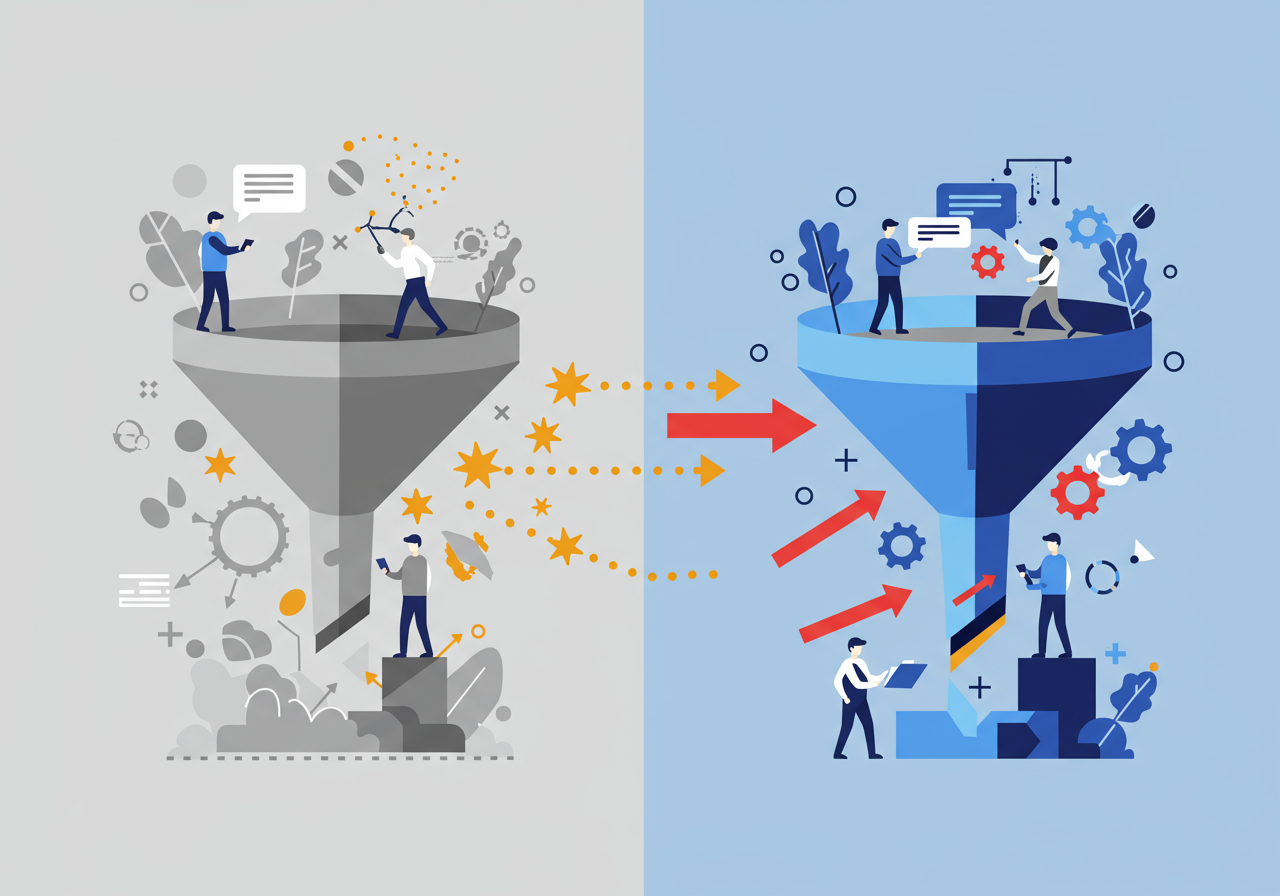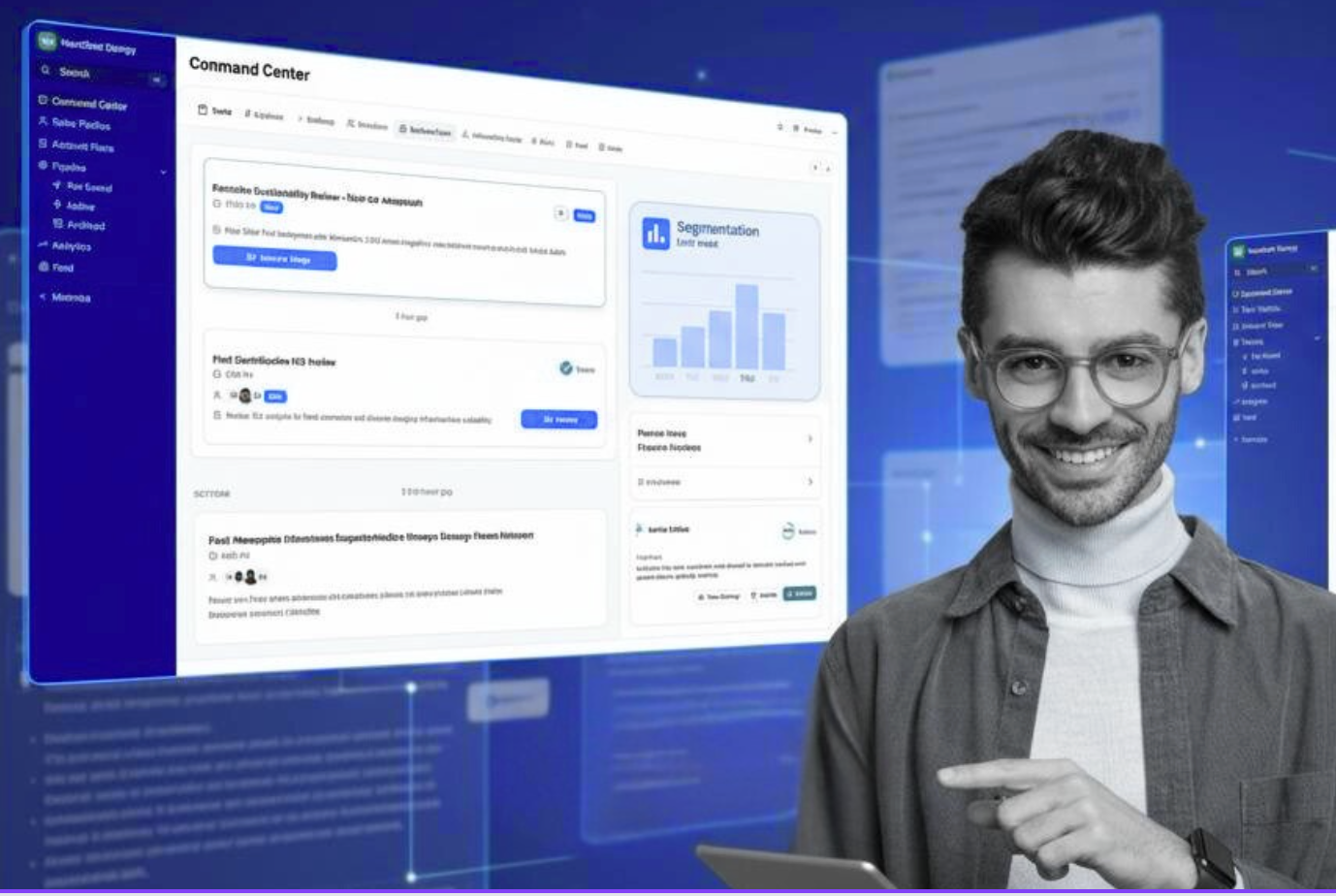How Top Performing Sales Organizations Use AI
The Intelligence Infrastructure That Wins Deals
Estee Woods
VP of Marketing

The performance gap between top and bottom B2B sales organizations has never been wider. While most sales leaders focus on training, compensation, and process improvements, the real differentiator lies in something far more fundamental: intelligence infrastructure.
Top-performing sales teams don't just work harder or have better products. They've fundamentally transformed how they gather, process, and act on sales intelligence. The organizations that have embraced AI sales intelligence and AI GTM strategies are systematically outperforming their competitors across every meaningful metric.
The Performance Gap: What the Data Reveals
The numbers tell a compelling story about the state of modern B2B sales performance:
Win Rate Disparity: Top organizations achieve win rates of 47%, compared to just 18% for the bottom performers. This isn't a marginal difference—it's a 2.6x performance multiplier that compounds across every quarter.
Sales Cycle Efficiency: While bottom-quartile teams struggle with average cycle lengths of 8.7 months, top performers close deals in 4.2 months, cutting time-to-revenue nearly in half.
Quota Attainment Reality: Perhaps most telling, 73% of top-quartile sellers consistently hit or exceed quota, while only 23% of bottom-quartile sellers achieve their targets. This creates a cascading effect where successful organizations attract better talent, while struggling teams face constant turnover.
Forecasting Accuracy Crisis: The data reveals another critical gap. While top performers forecast within 10% accuracy, bottom-quartile teams miss their forecasts by an average of 27%, creating planning chaos that ripples through the entire organization.
But what's driving these performance differences? The answer lies not in the sellers themselves, but in the intelligence infrastructure supporting them.
Intelligence Infrastructure: AI vs. Manual Territory Coverage
The most successful sales organizations have moved beyond traditional, manual approaches to territory management and account research. Instead, they've implemented AI sales intelligence systems that fundamentally change how sellers engage with their markets.
The Manual Approach: Working Harder, Not Smarter
Traditional sales organizations operate under severe intelligence constraints:
Limited Territory Coverage: Most sellers actively work only 20% of their assigned accounts, leaving vast portions of their territory dormant while competitors win deals they never knew existed.
Research Bottlenecks: Sellers spend 5-10 hours researching each high-value account, only to find their intelligence outdated before they can act on it. This manual approach doesn't scale across hundreds or thousands of accounts.
Reactive Positioning: Without real-time market intelligence, teams react to competitor moves rather than anticipating opportunities. They enter deals late in the buying cycle when differentiation becomes nearly impossible.
Stakeholder Blind Spots: Manual research struggles to identify the complete buying committee, resulting in deals that stall because critical decision-makers were never engaged.
The AI Intelligence Advantage
Top-performing organizations have implemented AI GTM systems that transform their intelligence capabilities:
Territory-Wide Opportunity Discovery: AI sales intelligence continuously monitors entire territories, surfacing high-value opportunities worth 3-5x average deal sizes across hundreds or thousands of accounts simultaneously.
Intelligent Account Research at Scale: Advanced systems automatically build comprehensive account intelligence using internal CRM data, business strategy analysis, and first-party insights, all aligned to ideal customer profiles.
Dynamic Account Planning: Real-time intelligence surfaces business changes, stakeholder shifts, and industry developments, providing immediate context on what each change means to account plans and opportunity strategies.
Predictive Opportunity Creation: AI analyzes how each account's business strategy is evolving and matches those patterns against historical data to proactively identify opportunities before buying triggers emerge.
Consider the transformation experienced by a global technology consulting firm that needed to pivot from inbound, brand-driven sales to proactive outbound motion. Before implementing AI sales intelligence, their sellers faced territories with hundreds of accounts but no clear way to prioritize opportunities. Manual research consumed days of effort, and their intelligence quickly became outdated.
After implementing AI-orchestrated GTM workflows, the company experienced their best quarter ever. The system automatically surfaced high-value opportunities across their entire customer base, identified the right C-level executives to engage, and provided conversation frameworks that transformed technical specialists into business consultants.
Competitive Positioning Strategies That Win Deals Before Competitors Engage
The most sophisticated AI sales intelligence systems don't just help teams react faster—they enable proactive positioning that wins deals before competitors even know opportunities exist.
Early Signal Detection
Advanced AI GTM platforms analyze multiple data sources to identify opportunity signals months before traditional buying triggers appear:
Business Strategy Evolution Monitoring: AI tracks how target accounts are evolving their strategic priorities, identifying needs that align with your solutions before procurement processes begin.
Stakeholder Movement Intelligence: Systems monitor changes in leadership, organizational structure, and decision-maker priorities that create new opportunity windows.
Technology Stack Analysis: AI identifies gaps, upgrades, and strategic technology initiatives that signal upcoming buying decisions.
Preemptive Relationship Building: Rather than waiting for RFPs, top organizations use AI intelligence to build relationships before opportunities become competitive:
Complete Stakeholder Intelligence: AI identifies the relevant buying committee for each opportunity hypothesis, then researches how each stakeholder thinks and what they care about.
Personalized Engagement Roadmaps: Systems deliver specific guidance on how to approach each stakeholder based on their priorities and the unique opportunity context.
Value Alignment Messaging: AI generates conversation frameworks that position solutions as strategic enablers rather than vendor options.
Competitive Inoculation
The most effective AI sales intelligence systems help teams inoculate against competitive threats:
Differentiation Opportunities: AI identifies unique value propositions that resonate with each account's specific business challenges and strategic priorities.
Competitive Blind Spot Analysis: Systems reveal areas where competitors are vulnerable, enabling strategic positioning that neutralizes their advantages.
Decision Criteria Influence: AI helps teams shape buyer evaluation criteria in ways that favor their solutions before competitors can respond.
Scalable Best Practices: How to Systematically Replicate Top Performer Intelligence
The key insight from analyzing top-quartile organizations is that their success isn't dependent on exceptional individual performers. It's built on systems that make every seller more intelligent.
Systematic Intelligence Workflows
Leading organizations implement AI sales intelligence systems that create consistent, repeatable processes:
Daily Account Prioritization: AI analyzes territory-wide signals to surface the highest-value opportunities worth immediate attention.
Automated Research Enrichment: Systems continuously update account intelligence, ensuring sellers always have current information without manual effort.
Step-by-Step Execution Playbooks: AI delivers conversation mapping and messaging that tells sellers exactly who to contact, what to say, and when to engage.
Pipeline Revival and Acceleration
Rather than focusing only on new opportunities, top performers use AI to maximize value from existing pipelines:
Stalled Deal Analysis: AI enriches dormant opportunities with fresh stakeholder insights, new buying signals, and next-best-actions that revive stalled conversations.
Acceleration Triggers: Systems identify specific actions that can compress sales cycles based on successful patterns from similar deals.
Risk Mitigation Intelligence: AI surfaces potential deal risks early, enabling proactive intervention before opportunities are lost.
Leadership Command and Control
The most successful implementations provide sales leaders with unprecedented visibility and predictive capabilities:
Territory Performance Analytics: AI delivers insights into which accounts are progressing, which need attention, and where resources should be allocated.
Predictive Revenue Modeling: Systems analyze pipeline quality and velocity to forecast revenue multiple quarters ahead with high accuracy.
The Implementation Reality: Native Integration vs. Complex Agent Training
A critical insight from successful AI sales intelligence implementations is that the "build your own agent" approach fails at scale. B2B sellers don't have time to create, train, and maintain AI agents. They need intelligence systems that work immediately within their existing workflows.
The most effective solutions integrate natively with existing CRM systems, requiring no change management or complex integrations. They layer seamlessly into platforms like Salesforce, making CRM systems proactive rather than passive data repositories.
This approach transforms the seller-CRM relationship. Instead of sellers working for the CRM by manually inputting data with little value in return, the CRM works for sellers by delivering actionable intelligence that guides them through entire customer journeys.
The Future of AI-Driven Sales Performance
The organizations that will dominate B2B sales in the coming years are those that recognize AI sales intelligence and AI GTM strategies as competitive necessities, not optional advantages.
The choice for sales leaders is clear: Invest in AI sales intelligence infrastructure that transforms how your organization discovers, develops, and wins opportunities, or continue operating with manual processes that limit your team's potential.
The data is definitive: Organizations with superior AI GTM intelligence capabilities consistently outperform across every metric that matters. The only question is whether your organization will join the top performers, or continue struggling with outdated, manual approaches while competitors pull further ahead.


